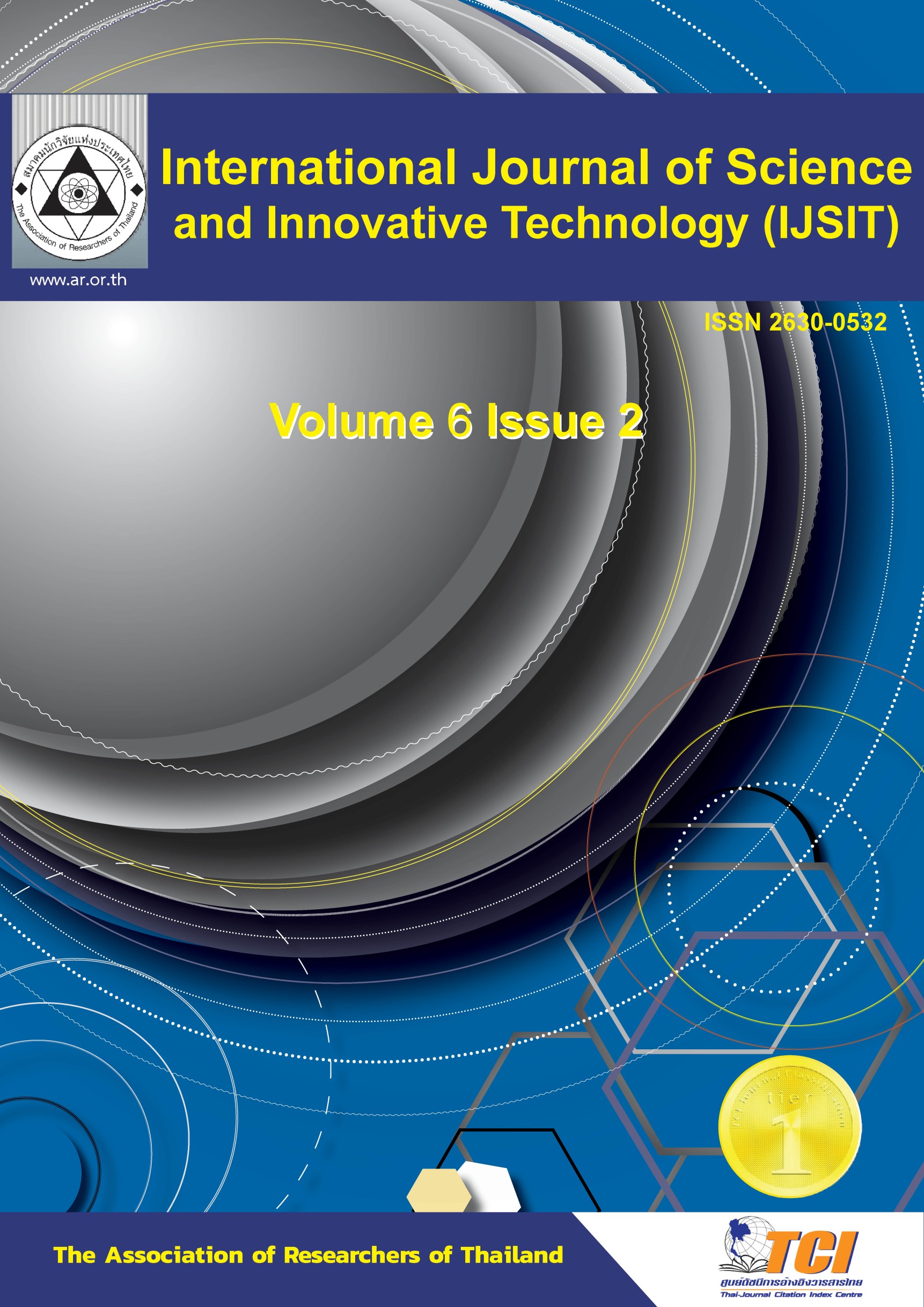The Field Evaluation of Innovative PM2.5 Monitoring Using Air Sensor Co-location with Regulatory Equipment
Main Article Content
Abstract
This study aims to evaluate the performance of PM2.5 air sensors using the light scattering technique in comparison to the Federal Equivalent Method (FEM) operated by the Pollution Control Department, during an extended period of operation, from June 2020 to December 2022. Pearson’s correlation reveals good agreement among the sensor units (0.70 – 0.98) and data completeness above 90%. However, a notable issue arises with the tendency to report extremely high concentrations (445 – 564 µg/m3) compared to FEM (235 µg/m3). Regression analysis shows substantial biases in the sensor measurements with the slope values ranging 0.8 - 1.3, and low to moderate fit (R2 0.18 - 0.58) for the hourly concentration dataset. The regression performs significantly better with the rolling 24-hour average values (R2 0.47 - 0.91). The trend lines of the offset values showed general agreement among the sensor units for most of the study period, except for the dry season where the deviation increased from each other and from the FEM, suggesting possible influence from the weather. This paper shows that the sensors are suitable for moderate accuracy requirements. However, for public warning purposes, there are potential areas of improvement, the first priority being the report of extreme values, which may trigger false alarms and cause unnecessary panic among the public.
Article Details

This work is licensed under a Creative Commons Attribution-NonCommercial-NoDerivatives 4.0 International License.
References
Announcement of the National Environment Board. (2022). Determined of ambient air quality standard
for particulate matter less than or equal to 2.5 microns. Published on July 9, 2022 in the Royal Gazette website. Retrieved from https://www.ratchakitcha.soc.go.th/DATA/PDF/2565/E/163/T_0021.PDF. (accessed on 20 September 2022).
Dejchanchaiwong, R., Tekasakul, P., Saejio, et al. (2023). Seasonal Field Calibration of Low-Cost PM2.5
Sensors in Different Locations with Different Sources in Thailand. Atmosphere 2023, 14, 496.
https://doi.org/10.3390/atmos14030496
The Energy and Economics Management Research Unit Institute of Science and Technology Research
Chiang Mai University. (2022). Report on the results of the calibration of the dust meter measuring
less than 2.5 microns in size.(PM2.5) type Low Cost Sensor from research, Dust Boy model.
Available Online. https://www.CMUCCDC.org/uploads/report/evaluation_report.pdf (cmuccdc.org)
(accessed on 17 March 2022).
The Energy and Economics Management Research Unit Institute of Science and Technology Research
Chiang Mai University. (2022). Report on Low Cost Sensor Calibration Performance, Dust Boy model, a case study of Ubon Ratchathani measurement station (83T). Available Online. https://www.CMUCCDC.org/uploads/report/calibration_report.pdf (cmuccdc.org). (accessed on 17 March 2022).
The Pollution Control Department. (2020). The Action Plan for driving National Agenda on “Pollution
Problem Management; Particulate Matter”. Retrieved from online
https://www.pcd.go.th/strategyแผนปฏิบัติการขับเคลื่อนวาระแห่งชาติ-การแก้ไขปัญหามลพิษด้านฝุ่นละออง
Jayaratne, R., Liu, X., Thai, P., et al. (2018). The influence of humidity on the performance of a low-cost
air particle mass sensor and the effect of atmospheric fog. Atmos. Meas. Tech., 11, 4883–4890.
https://doi.org/10.5194/amt-11-4883-2018.
JRC Technical Reports. (2019). Review of sensors for air quality monitoring. Retrieved from
https://publications.jrc.ec.europa.eu/repository/handle/JRC116534 file:///C:/Users/Admin/Downloads/kjna29826enn.pdf ISBN 978-92-76-09255-1, ISBN 978-92-76-09255-1, ISSN 1831-9424 doi:10.2760/568261. (accessed on 13 May 2022).
Rogulski, M., and Badyda, A. (2020). Investigation of Low-Cost and Optical Particulate Matter Sensors for
Ambient Monitoring. Atmosphere 2020, 11, 1040; doi:10.3390/atmos11101040.
www.mdpi.com/journal/atmosphere.
Shi J, Chen F, Cai Y, Chen R, et al. (2017). Validation of a light-scattering PM2.5 sensor monitored based on
the long-term gravimetric measurements in field tests. PLoS one 12(11): e0185700.
https://doi.org/10.1371/journal.pone.0185700.
United State Environmental Protection Agency EPA. (2014). Air Sensor Guidebook. EPA/600/R-14/159. June
www.epa.gov/ord.
U.S. EPA. Policy Assessment for the Review of the PM NAAQS (Final Report, January 2020). U.S.
Environmental Protection Agency, Research Triangle Park, NC, EPA-452/R-20-002, 2020.
https://www.epa.gov/system/files/documents/2021-10/final-policy-assessment-for-the-review-of-the-pm-naaqs-01-2020.pdf, (accessed on 3 May 2023).
United State Environmental Protection Agency EPA. (2021). List of Designed References and Equivalent
Methods. EPA/600/R-22/213. Issue dated: June 15, 2021. www.epa.gov/rttn/amtic/criteria.html.
United State Environmental Protection Agency EPA.. (2022). The Enhanced Air Sensor Guidebook.
EPA/600/R-22/213. September 2022. www.epa.gov/research.
World health organization; WHO. (2021). Available Online. Retrieved from
World Health Organization.(2022). Ambient (Outdoor) Air Quality and Health. Available Online
https://www.who.int/news-room/fact-sheets/detail/ambient-(outdoor)-air-quality-and-health (accessed on 23 June 2022).

